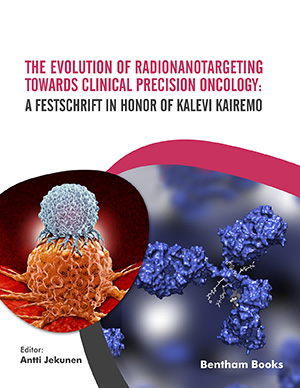Abstract
In 1996, Krenning et al. injected the radiopeptide for the first time
intravenously.111In-Octreotide as a new treatment approach, today, worldwide known as
Peptide Receptor Radionuclide Therapy (PRRT) to confront unresectable
neuroendocrine tumors. We started treating this rare category of neoplasms in our
Institution in 1997, exclusively injecting intra-arterially, initially 111In Octreotide, in
high doses, focused our interest on multiple liver metastases (particularly, less than 20
mm, in diameter) after catheterization of the hepatic artery [“Aretaieion Protocol”]. The
radiopeptide was infused in repeated high activity, ranging per session from 4.070 GBq
(110 mCi) to 5.920 GBq (160 mCi) with a time interval between sessions of 6-8 weeks,
seeking to achieve a tumor absorbed dose according to the dosimetry followed, over 70
Gy (tumor mass 10 gr). When 90Y DOTA-TOC was used (3 folds in total, in bi-monthly
intervals between sessions), the infused activity was 4.1± 0.2 GBq per patient, per
session, whereas when n.c.a. 177Lu-TOTA-TOC was injected (6 folds in total, in bimonthly
intervals between sessions), the activity was 7.0 ± 0.4 GBq per patient, per
session. Follow-up at tri-monthly intervals was performed by means of ultrasonography
(US) and every six months, by contrast, material-enhanced computed tomography (CT)
and / or magnetic resonance tomography (MRI). This therapeutic procedure is
described in detail, based on the experience in more than 800 hundred catheterizations,
analyzing its advantages and limitations as a first-line treatment scheme for the
management of this rare category of tumors.







